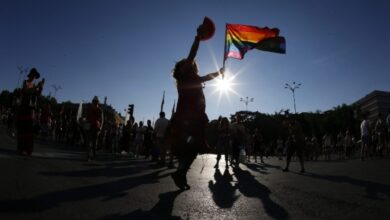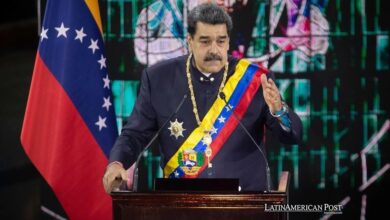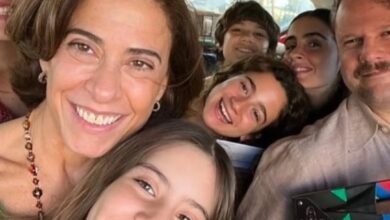“Lightyear” Is Not the Only One: LGBTIQ+ Representation in Animation
Pixar's New Movie, "Lightyear", Sparked Controversy for a Scene in Which Two Women Kiss. But this is Not the First Time that an Animated Production has LGBTIQ+ Representation..

Photos: Disney Studios
LatinAmerican Post | July Vanesa López Romero
Listen to this article
Leer en español: “Lightyear” no es la única: representación LGBTIQ+ en la animación
On June 16, "Lightyear" was released, the new Pixar and Disney film that tells the origin of Buzz Lightyear, a character known from the Toy Story saga. But with the premiere of the film there was also controversy, as it was banned in 14 countries for a scene in which a couple of women share a kiss. Likewise, it generated controversy in the countries where it was not prohibited, as several viewers expressed their dissatisfaction that this type of content was shown in a children's film. Of course, there was a response from the same participants in the film and from the LGBTIQ+ community, who defended the scene and invited us to reconsider the importance of open representation for the little ones.
But is it something new? Here we tell you how animation studios have reacted in recent years to diverse representations.
How it all started?: Queer coding
It may not seem like it at first glance, but LGBTIQ+ characters have been present in animated productions for a long time, especially in those of Disney. Unfortunately, that presence has not always been the best way to represent the community, since it is the villains of the production company's classic films who usually have the characteristics with which they are related to the community. In other words, based on subtexts and stereotypes, the scriptwriters of the productions put LGBT characters on the screen, but always associating them with anti-heroes, so that children's audiences grew with these same associations.
The perfect example of this is Ursula, the villain from The Little Mermaid. This villain is inspired by the Drag Queen Divine, recognized by the movie "Pink Flamingos", from 1972. In Úrsula we find a voluptuous villain, with a thick voice, exaggerated makeup and mannerisms typical of the drag scene. Other examples are Jafar, from "Aladdin", Scar, from "The Lion King" or Captain Hook, from "Peter Pan".
The need for representation without stereotypes
LGBT misrepresentation was not only seen in animation, but also in other film productions, which, despite openly showing sexually diverse characters, always condemned them to fulfill not only a secondary role but related their identity and orientation sexual to two specific canons: to be the comic relief or, on the contrary, to be perverted or mentally ill.
Luckily, this perspective began to fade and with the arrival of a broader and more open social struggle in the 2000s, and especially in the 2010s, the productions began to make representations that were not only less stereotyped but also protagonists. Of course, the animation also responded to this. But animation is a type of art that is usually thought for a children's audience, so it has had a more careful path to follow. Cartoon Network Studios is one of the production companies that has bet the most on this issue, and that, in fact, has been recognized by the community as a standard-bearer for the community, since the productions in which there are LGBT representations are very clear about it. That is to say, there are no subtexts or winks, but homosexual couples are openly shown.
Disney is the most recognized animation studio in the world, but it has also been one of the most criticized because its classic productions have contributed to generating an ideal regarding how girls and boys should look and behave. Therefore, it is not surprising that despite the fact that the Pixar animation studio has sought for years to create more diverse content, this desire has been cut short by Disney itself. In fact, in the case of "Lightyear," several Pixar employees denounced that Disney executives pushed hard for the kissing scene between women to be cut before the premiere. In the end, the scene stuck, and that's good, but the reaction of the more conservative people leaves a lot to be desired.
Read also: Review of "Lightyear": a great animated science fiction movie
What are the policies in this regard?
Although animation studios may have LGBTIQ+ rights policies, these are usually reduced to the work environment, and not necessarily to the content produced, the clear example being Dinsey, which not long ago, the company was in the eye of the hurricane for financing and supporting the movement legislative "Don't say Gay" in Florida, United States. This project seeks that there is no teaching about sexual orientation or gender identity in educational institutions.
In this case, it is clear that the policies of a company are not necessarily followed in all spheres. Thus, a studio like Disney is open-minded to the world, but also steps on itself when it comes to producing diverse content.
With the premiere of "Lightyear" comes the hope that this type of content will be normalized and increasingly common, but we still have to continue fighting for LGBTIQ+ rights, which cannot be reduced to people being tolerated, but also have a dignified position at a cultural level and that includes the representation that is given on the screen.




